Abstract
Stock cultures of Streptococcus thermophilus are essentially galactose negative (Gal−). Although both galactose 1-phosphate uridyl transferase and uridine-5-diphospho-glucose 4-epimerase are present, suggesting that the genes for the Leloir pathway exist, cells cannot induce high levels of galactokinase. Therefore, galactose is largely excreted when cultures are grown on lactose, and most strains cannot be readily adapted to grow on free galactose. Gal− cultures were grown in a chemostat under lactose limitation in which high concentrations of residual galactose were present. Under this selection pressure, Gal+ organisms eventually took over the culture with all four strains examined. Gal+ cells had induced galactokinase, and three of the four strains grew on free galactose with doubling times of 40 to 50 min. When Gal+ organisms were grown on lactose in batch culture, the galactose moiety was only partially utilized while lactose was still present. As lactose was exhausted, and catabolite repression was lifted, the Leloir pathway enzymes (especially galactokinase) were induced and the residual galactose fermented. Neither phospho-β-galactosidase activity nor the enzymes of the d-tagatose 6-phosphate pathway were detected in S. thermophilus. In contrast to Streptococcus cremoris and Streptococcus lactis, fermentation was homolactic with galactose in batch cultures and with lactose limitation in the chemostat. When mixed Gal+-Gal− cultures were repeatedly transferred in milk, the Gal− cells became the dominant cell type. The Gal− phenotype of stock cultures probably reflects their prolonged maintenance in milk.
Full text
PDF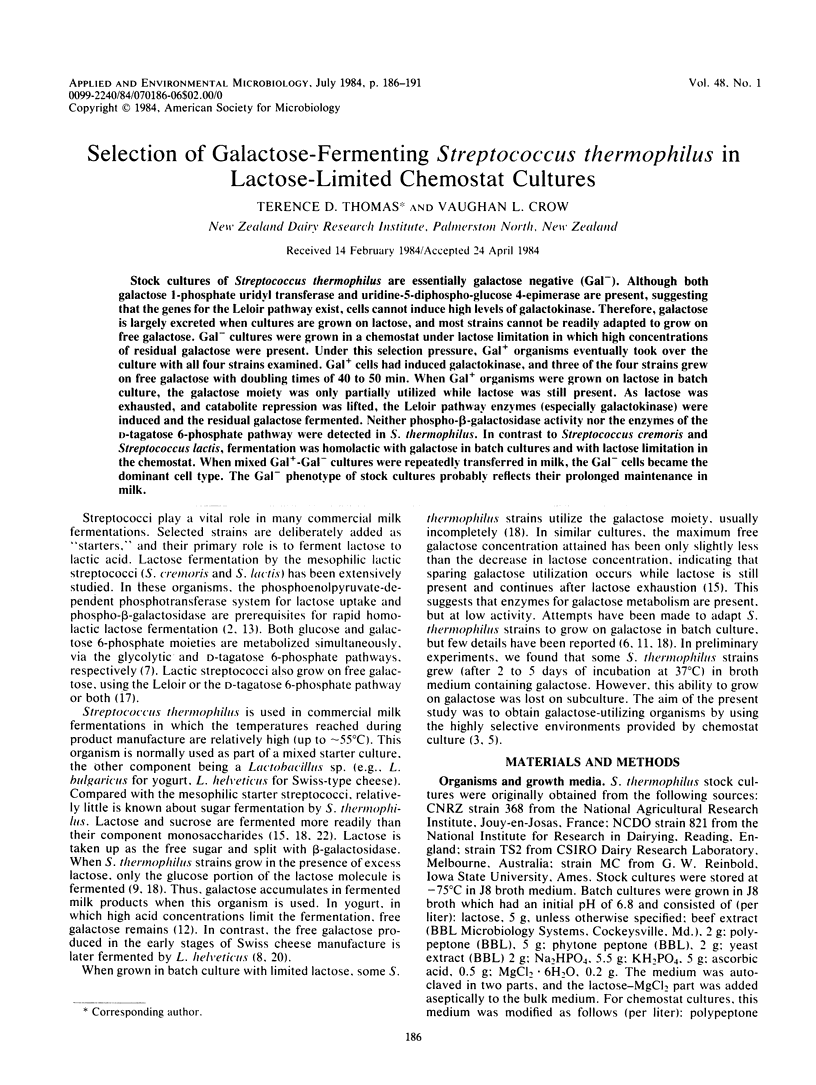
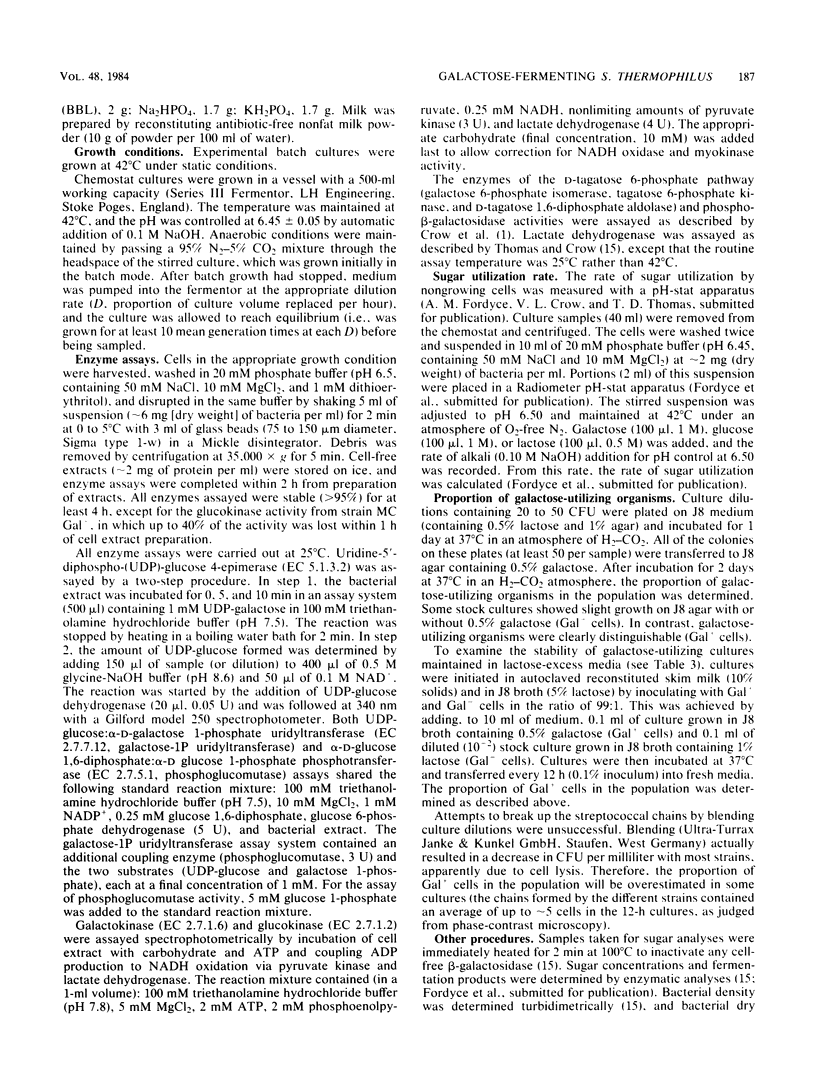
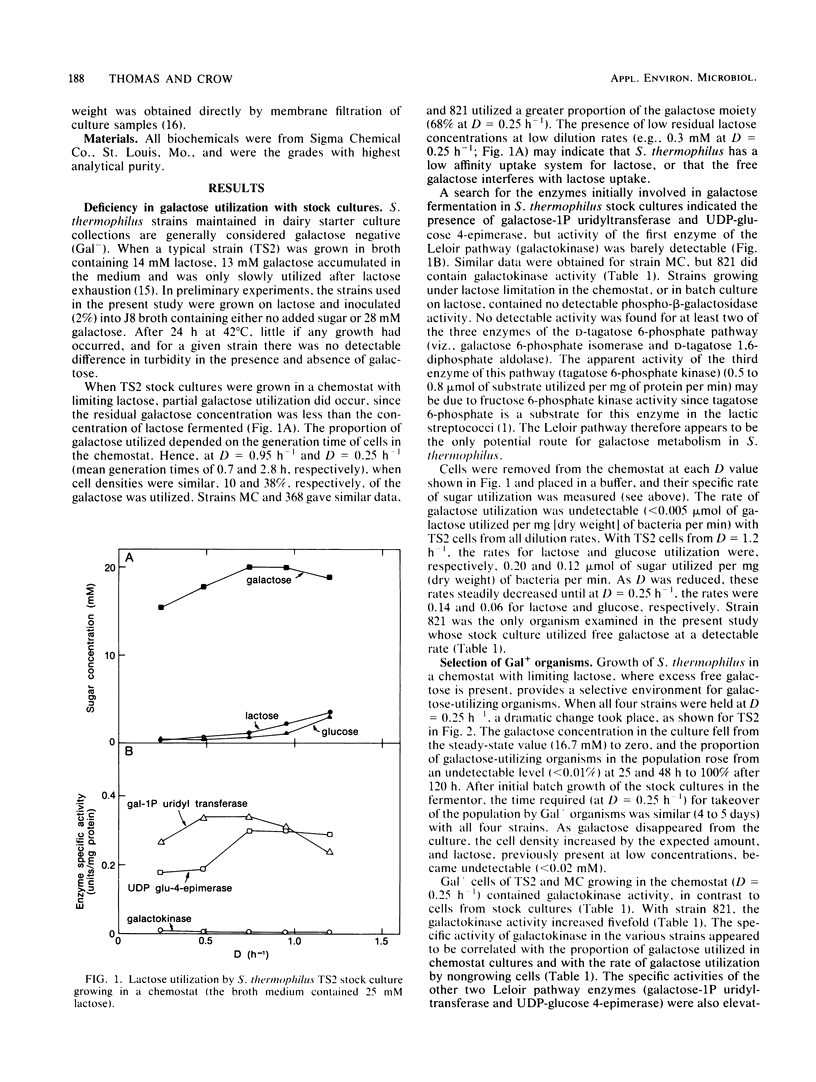
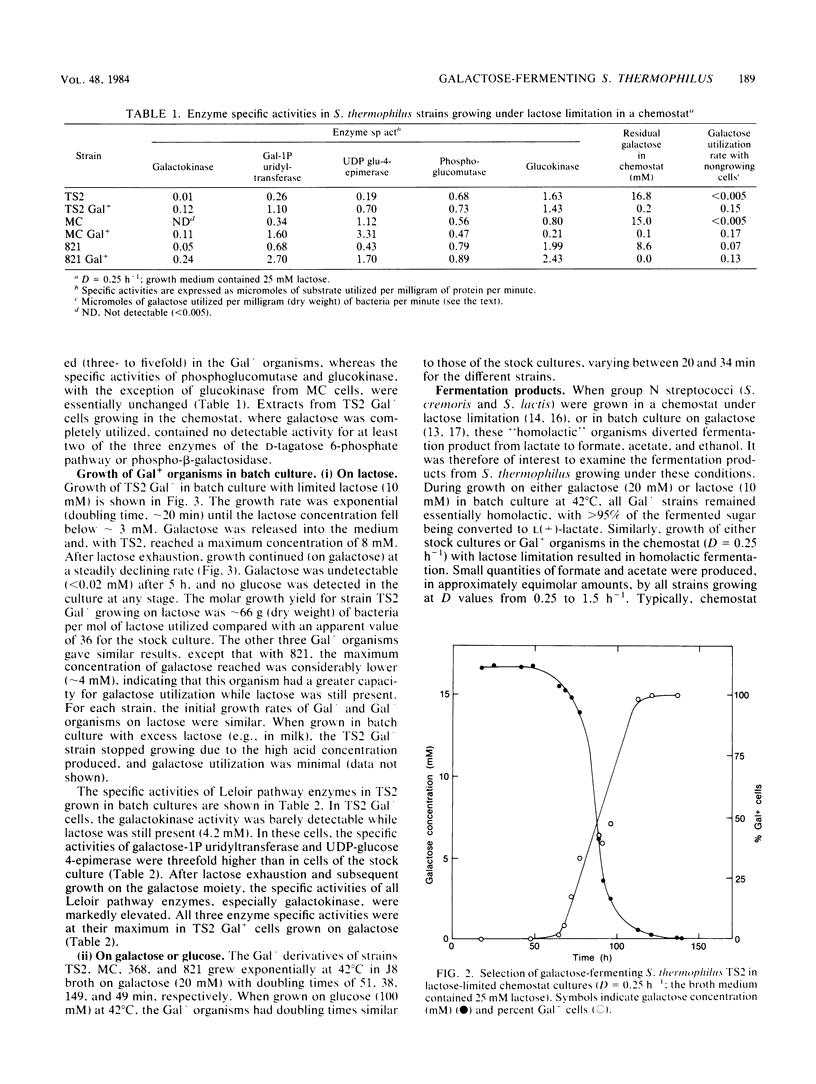
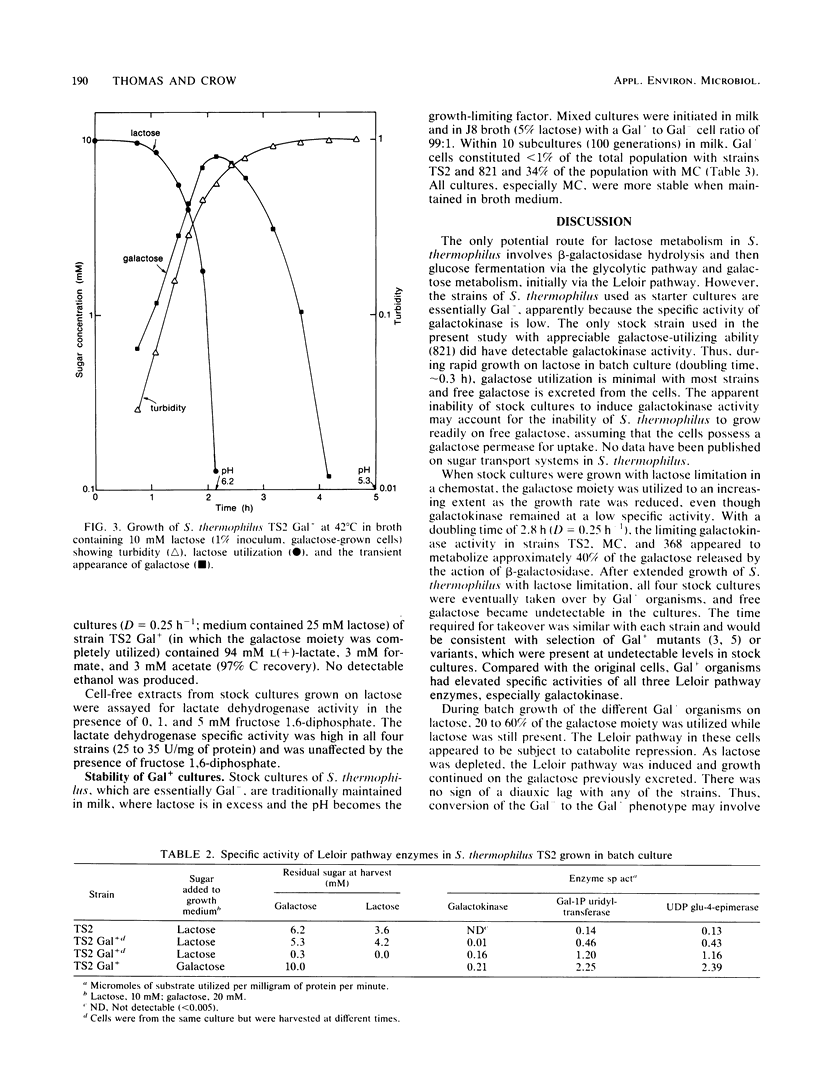
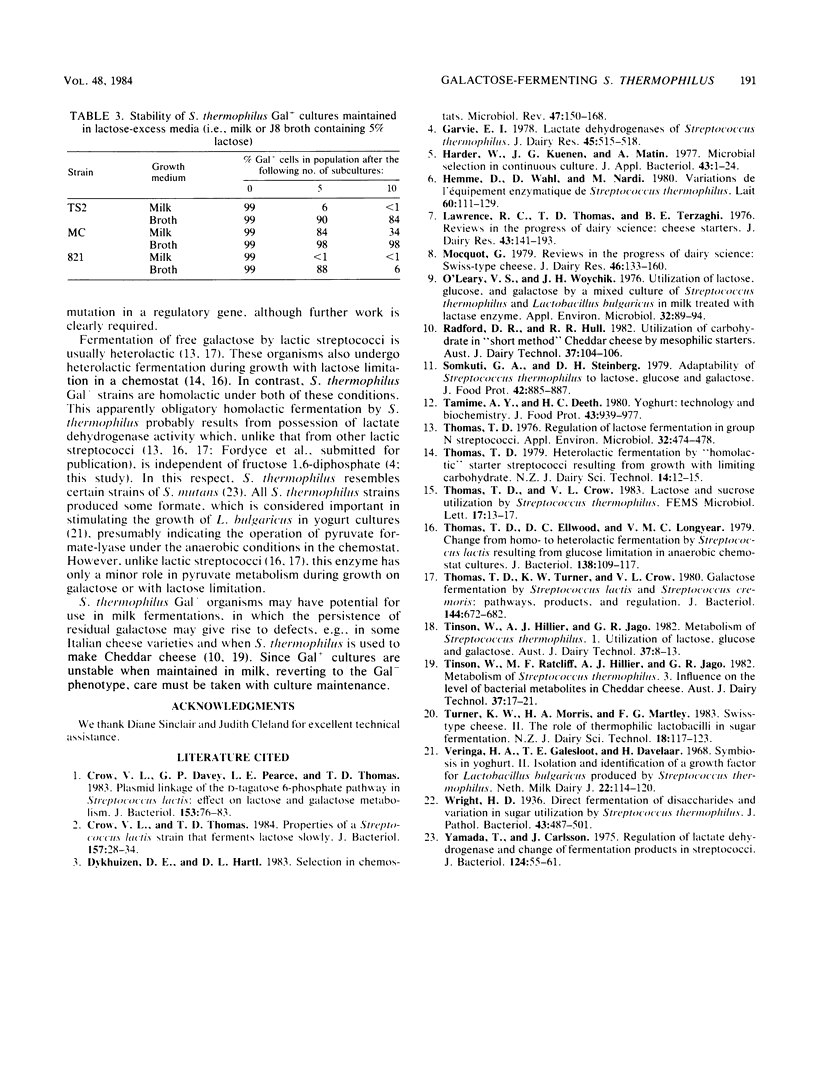
Selected References
These references are in PubMed. This may not be the complete list of references from this article.
- Crow V. L., Davey G. P., Pearce L. E., Thomas T. D. Plasmid linkage of the D-tagatose 6-phosphate pathway in Streptococcus lactis: effect on lactose and galactose metabolism. J Bacteriol. 1983 Jan;153(1):76–83. doi: 10.1128/jb.153.1.76-83.1983. [DOI] [PMC free article] [PubMed] [Google Scholar]
- Crow V. L., Thomas T. D. Properties of a Streptococcus lactis strain that ferments lactose slowly. J Bacteriol. 1984 Jan;157(1):28–34. doi: 10.1128/jb.157.1.28-34.1984. [DOI] [PMC free article] [PubMed] [Google Scholar]
- Dykhuizen D. E., Hartl D. L. Selection in chemostats. Microbiol Rev. 1983 Jun;47(2):150–168. doi: 10.1128/mr.47.2.150-168.1983. [DOI] [PMC free article] [PubMed] [Google Scholar]
- Garvie E. I. Lactate dehydrogenases of Streptococcus thermophilus. J Dairy Res. 1978 Oct;45(3):515–518. doi: 10.1017/s0022029900016745. [DOI] [PubMed] [Google Scholar]
- Harder W., Kuenen J. G. A review. Microbial selection in continuous culture. J Appl Bacteriol. 1977 Aug;43(1):1–24. doi: 10.1111/j.1365-2672.1977.tb00717.x. [DOI] [PubMed] [Google Scholar]
- O'leary V. S., Woychik J. H. Utilization of Lactose, Glucose, and Galactose by a Mixed Culture of Streptococcus thermophilus and Lactobacillus bulgaricus in Milk Treated with Lactase Enzyme. Appl Environ Microbiol. 1976 Jul;32(1):89–94. doi: 10.1128/aem.32.1.89-94.1976. [DOI] [PMC free article] [PubMed] [Google Scholar]
- Thomas T. D., Ellwood D. C., Longyear V. M. Change from homo- to heterolactic fermentation by Streptococcus lactis resulting from glucose limitation in anaerobic chemostat cultures. J Bacteriol. 1979 Apr;138(1):109–117. doi: 10.1128/jb.138.1.109-117.1979. [DOI] [PMC free article] [PubMed] [Google Scholar]
- Thomas T. D. Regulation of lactose fermentation in group N streptococci. Appl Environ Microbiol. 1976 Oct;32(4):474–478. doi: 10.1128/aem.32.4.474-478.1976. [DOI] [PMC free article] [PubMed] [Google Scholar]
- Thomas T. D., Turner K. W., Crow V. L. Galactose fermentation by Streptococcus lactis and Streptococcus cremoris: pathways, products, and regulation. J Bacteriol. 1980 Nov;144(2):672–682. doi: 10.1128/jb.144.2.672-682.1980. [DOI] [PMC free article] [PubMed] [Google Scholar]
- Yamada T., Carlsson J. Regulation of lactate dehydrogenase and change of fermentation products in streptococci. J Bacteriol. 1975 Oct;124(1):55–61. doi: 10.1128/jb.124.1.55-61.1975. [DOI] [PMC free article] [PubMed] [Google Scholar]


